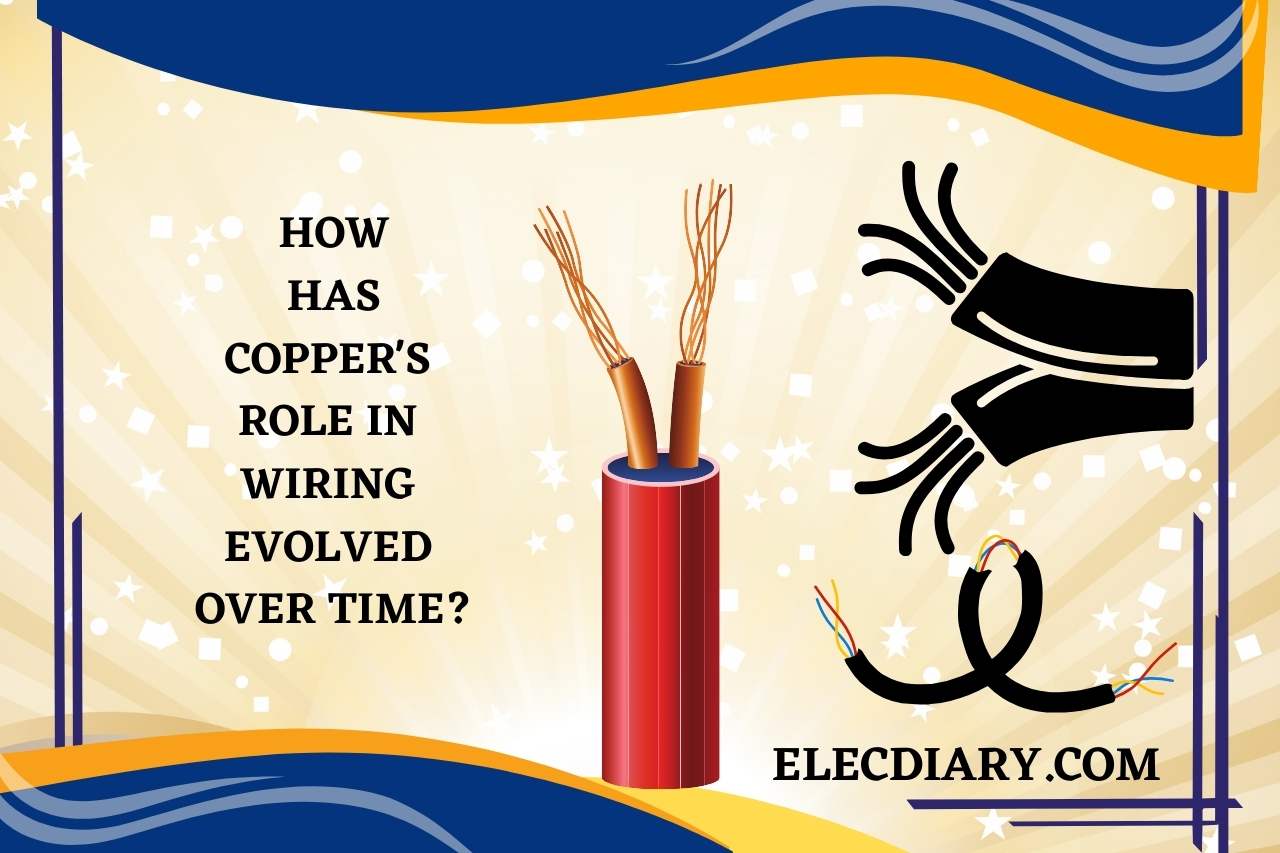Why is Copper Used for Most Electrical Wiring? Dealing with Uncorrectable!
“Why is copper used for most electrical wiring?” has been a point of intrigue for many of us. Copper, cherished for its superior conductivity, flexibility, and durability, has anchored its position in the realm of electrical applications. As your cornerstone of countless technological advancements, this metal’s pivotal role spans from age-old telegraph systems to contemporary electronic circuits. Dive in to unravel the enigma behind copper’s dominance and its journey through time.
Why is Copper Used for Most Electrical Wiring?
The primary reason copper is used for most electrical wiring is its exceptional conductivity combined with its durability and ease of use. It efficiently transfers electrical currents with minimal energy loss, making it an ideal choice for wiring systems.
- Superior Conductivity: Among metals, copper ranks as one of the best conductors of electricity. This means that it allows electrical currents to flow freely and with very little resistance, ensuring efficient energy transmission. Its natural conductivity ensures that your devices and systems operate optimally with minimal energy wastage.
- Durability: Copper wires are robust and resistant to corrosion, giving them a longer lifespan compared to other materials. This longevity ensures that your copper-wired systems require less maintenance and replacements over time.
- Flexibility: Copper is highly malleable, which makes it easy to bend and shape. This flexibility ensures that your wiring can be routed around obstacles and corners without breaking, reducing installation challenges and potential repair costs.
- Heat Resistance: Copper can handle high temperatures without melting or deforming. This resistance to heat minimizes risks of short circuits or fires, especially in your high-power applications.
- Cost-Effectiveness: While there are other materials with similar conductivity, such as silver, copper remains more cost-effective. Its abundance and ease of extraction make it a practical choice for large-scale electrical projects.
Incorporating these advantages, it becomes evident why copper has remained a staple in the electrical industry. While there are always innovations and new materials emerging, copper’s inherent properties have solidified its position as your go-to material for electrical wiring. As technologies evolve, your reliance on efficient and reliable materials like copper continues to grow, emphasizing its critical role in modern electrical systems.

What Properties Make Copper Ideal for Electrical Conductivity?
The properties that make copper ideal for electrical conductivity are as follows. Understanding what makes copper a top choice for electrical conductivity involves delving into its intrinsic properties.
- High Electrical Conductance: At a fundamental level, copper atoms possess a free electron in their outer electron shell. These free electrons move easily, facilitating your flow of electric current. This atomic configuration makes copper a superb conductor.
- Low Resistivity: Copper’s low resistivity ensures minimal energy loss during transmission. Lower resistivity means that your material doesn’t oppose your flow of electrical current, resulting in efficient energy transfer.
- Ductility: Copper is exceptionally ductile, meaning it can be stretched into your thin wires without breaking. This is essential for creating intricate and detailed wiring systems that are necessary for complex electrical setups.
- Resistance to Corrosion: Over time, some metals can corrode, which can impede your electrical flow. Copper, especially when used with protective coatings, resists oxidation and corrosion, ensuring consistent electrical performance throughout its lifespan.
- Thermal Conductivity: Along with its excellent electrical conductivity, copper is also a good conductor of heat. This ensures that any heat produced during electrical conduction is quickly dissipated, reducing your chances of overheating and potential damage.
- Malleability: Copper’s ability to be molded and shaped without cracking makes it easier to design and implement in various electrical installations.
In essence, the combination of these properties, ranging from its atomic configuration to its physical attributes, establishes copper as your quintessential material for ensuring reliable and efficient electrical conductivity in myriad applications.
How Does Copper Compare to Other Conductive Materials?
Here’s a comparative breakdown when evaluating the suitability of copper for electrical applications, it’s instructive to contrast it with other conductive materials:
- Copper vs Aluminum: While aluminum is lighter and cheaper than copper, it has only about 61% of the electrical conductivity that copper does. Also, aluminum can be less durable and more susceptible to oxidation, requiring special connectors or coatings to prevent corrosion.
- Copper vs Silver: Silver is technically your best conductor of electricity. However, its high cost and susceptibility to tarnish (which can impede conductivity over time) make it impractical for your widespread electrical use. Copper, being more economical and less prone to tarnish, becomes your preferred choice.
- Copper vs Gold: Gold is often used in specific applications, like high-quality connectors, due to its resistance to corrosion. Still, its cost and slightly lower conductivity than copper limit its broader usage.
- Copper vs Iron: Though iron can conduct electricity, its higher resistance and proneness make rust less efficient than copper.
While various materials possess conductive qualities, copper strikes a near-perfect balance of conductivity, durability, and cost-effectiveness, solidifying its dominance in your electrical domain.
Are There Any Drawbacks to Using Copper in Electrical Wiring?
There are primary drawbacks of using copper in electrical wiring, and they include:
- Cost: In comparison to materials like aluminum, copper can be more expensive, influencing decisions in large-scale projects where budget constraints exist.
- Weight: For applications where weight is a significant concern, such as in aerospace, the density of copper can be a disadvantage to you compared to lighter alternatives like aluminum.
- Theft Risk: Due to its value, copper wiring can be a target for theft in unsecured locations, leading to potential damages and increased security costs.
- Oxidation: Though less prone than other metals, copper can still oxidize over time, which might slightly decrease its conductivity if you do not adequately protect it.
Indeed, while copper is an excellent choice for your electrical wiring, it is not without its limitations. In spite of these drawbacks, the advantages of copper usually outweigh its limitations in most electrical applications.

How Has Copper’s Role in Wiring Evolved Over Time?
Tracing the journey of copper in wiring, we observe significant evolutions.
Initially, copper’s excellent conductivity traits were recognized in ancient civilizations and utilized for rudimentary electrical purposes.
As the Industrial Revolution surged, so did the need for reliable electrical systems. This era saw copper becoming a predominant choice for telegraph lines and early power distribution.
Fast forward to the 20th century, with the electronic boom, copper’s demand skyrocketed. Innovations like insulated cables made copper wiring more efficient and safe.
Furthermore, as technology advanced, so did the methods of processing and refining copper, enhancing its conductivity and resilience.
Today, while alternatives like fiber optics are encroaching on certain domains, copper’s versatility ensures its continued significance in diverse applications, from household wiring to sophisticated electronic circuits.
Watch this one,
Video Credits – ExperiHub








